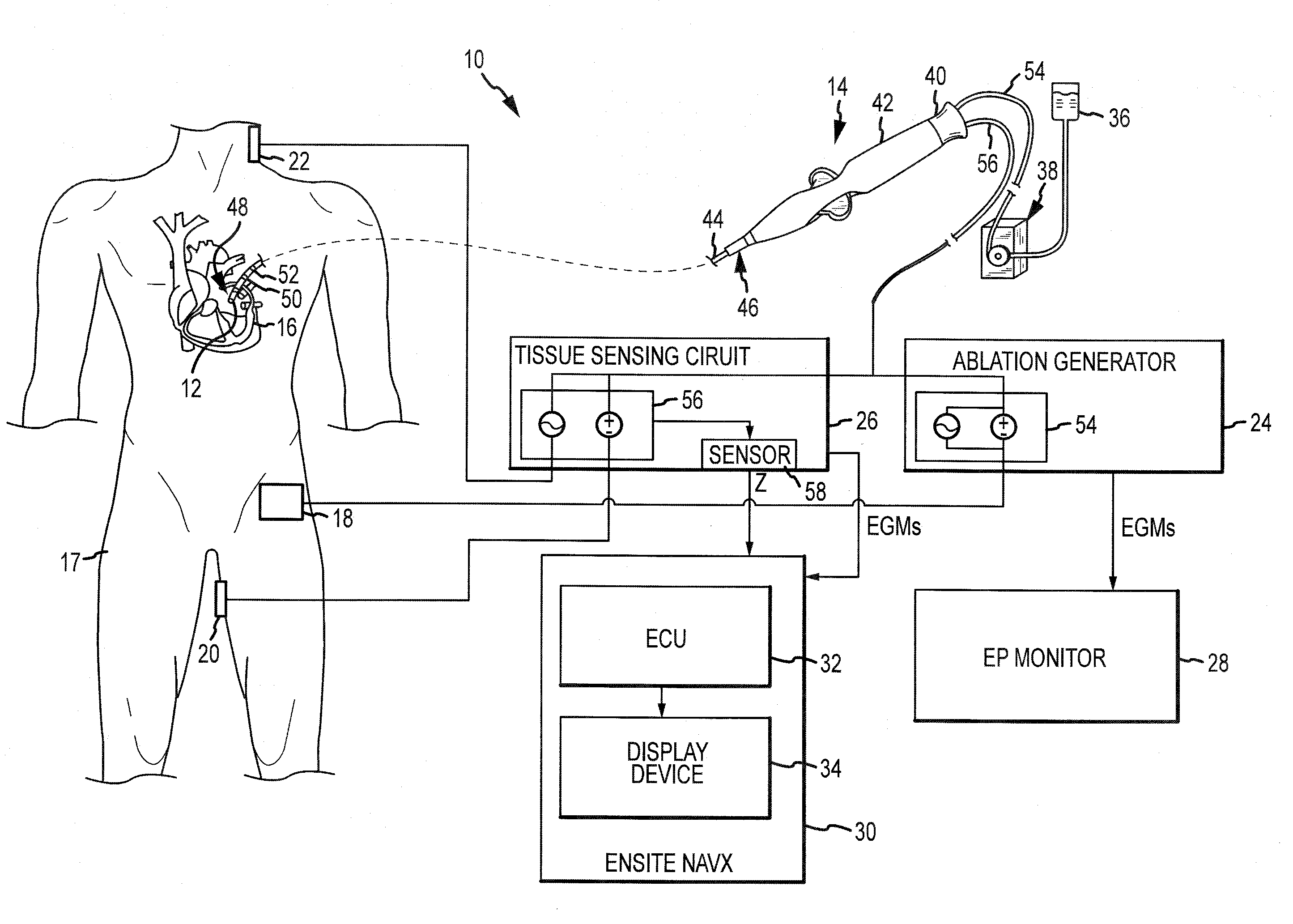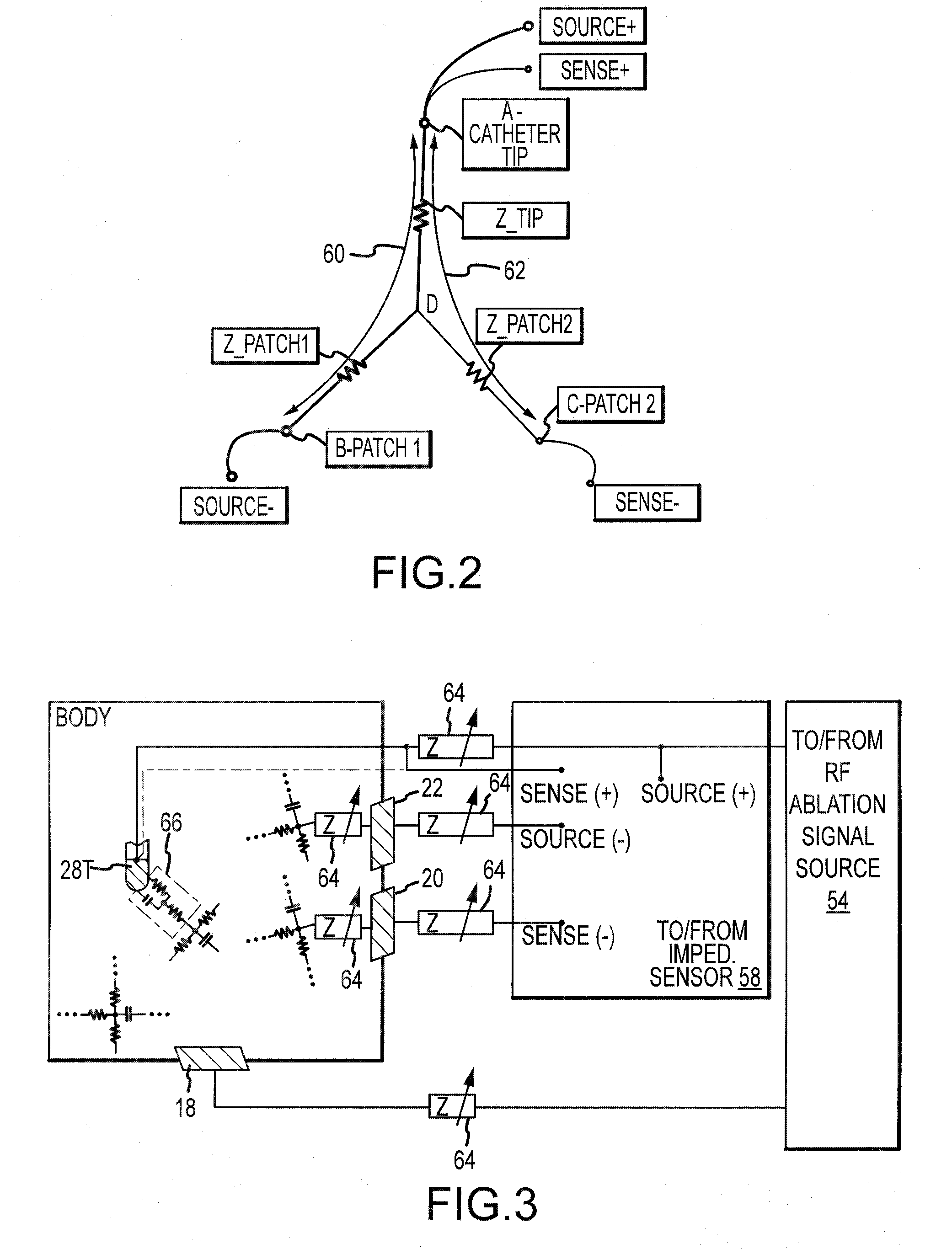System and Method for Assessing Coupling Between an Electrode and Tissue
- Summary
- Abstract
- Description
- Claims
- Application Information
AI Technical Summary
Benefits of technology
Problems solved by technology
Method used
Image
Examples
Embodiment Construction
[0029]Referring now to the drawings wherein like reference numerals are used to identify identical components in the various views, FIG. 1 illustrates one embodiment of a system 10 for one or more diagnostic and therapeutic functions including components providing an improved assessment of a degree of coupling between an electrode 12 on a catheter 14 and a tissue 16 in a body 17. In the illustrated embodiment, tissue 16 comprises heart or cardiac tissue. It should be understood, however, that the present invention may be used to evaluate coupling between electrodes and a variety of body tissues. Further, although electrode 12 is illustrated as part of a catheter 14, it should be understood that the present invention may be used to assess a degree of coupling between any type of electrode and tissue including, for example, intracardiac electrodes, needle electrodes, patch electrodes, wet brush electrodes (such as the electrodes disclosed in commonly assigned U.S. patent application S...
PUM
 Login to View More
Login to View More Abstract
Description
Claims
Application Information
 Login to View More
Login to View More - R&D
- Intellectual Property
- Life Sciences
- Materials
- Tech Scout
- Unparalleled Data Quality
- Higher Quality Content
- 60% Fewer Hallucinations
Browse by: Latest US Patents, China's latest patents, Technical Efficacy Thesaurus, Application Domain, Technology Topic, Popular Technical Reports.
© 2025 PatSnap. All rights reserved.Legal|Privacy policy|Modern Slavery Act Transparency Statement|Sitemap|About US| Contact US: help@patsnap.com



